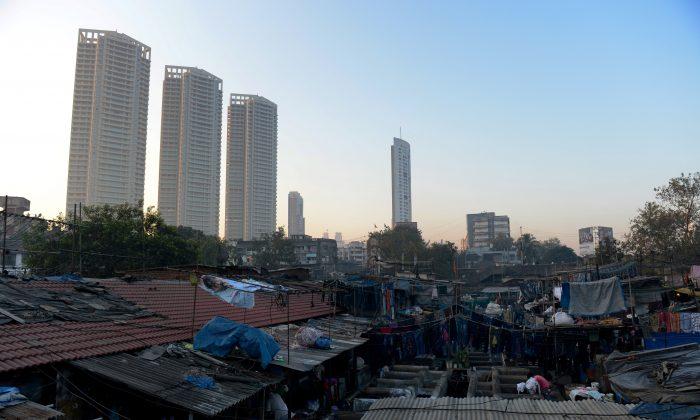Even if you have not been to steamy Mahalaxmi Dhobi Ghat, Mumbai’s well-known outdoor laundry facility, there is a chance that your clothing has. Densely packed against Mumbai’s central rail system, this iconic complex is the largest of many sites that collect, hand wash, dry, and deliver much of the city’s laundry.
It has reportedly done so since the days of the British Raj, but the site also exemplifies an unsettling cosmopolitan modernity. Its thousands of laborers partake actively in globalization, effectively producing for the world.
Textile manufacturers contract with the site for first washes. Some washers here specialize in giving denim its “stonewashed” look, so ubiquitous on store shelves. The city’s hotels are the biggest customers, sending out tourists’ laundry as well as their own linens.
A backdrop of modern high rises visible beyond the laundry site symbolizes the city’s jarring transformation since the Indian economy’s neoliberal turn in the early 1990s.
Many of the people who work in the 23-acre area, however, live in tenements situated close to its dense maze of cubicles, washing stones, and chemicals. They rent the stones monthly in hopes of sustaining family businesses or even achieving upward mobility in a steeply hierarchical society.
Beyond their tremendous physical output, the workers contribute mightily to the cultural production that is the hallmark of a global city.
Unlike other working poor areas in the city, locals tolerate photography, and even charge for tours. The laundry’s central location makes it ideal for tourists sightseeing in a city that is notoriously difficult to get around.
Mahalaxmi Dhobi Ghat symbolizes a degree of authenticity for outsiders because it relies on a traditional form of labor with apparently deep historic roots. It has spurred endless comment on global tourism websites such as Trip Advisor. Its place in popular culture was solidified further by a recent romantic film called “Dhobi Ghat,” much of which was filmed on site.
In short, Mahalaxmi Dhobi Ghat engenders two forms of production that are both prized by cities under capitalism: the physical kind of production, essential to maintaining the comforts enjoyed by tourists and affluent locals at low cost; and the metaphysical kind of production, which gives the city a resonant place in the popular imagination. Both create immense value in the economies of cities, and are almost always unevenly shared.
Unlike other great cities, Mumbai does not lend itself well to sanitized images.
The city’s unflinchingly honest street culture reveals candid truths about the costs of pursuing global influence. While white-collar knowledge sectors are a widely noted component of development in urban India more broadly, Mumbai’s built environment conveys a different story.
The city’s class structure rests heavily upon labor-intensive forms of production. Mahalaxmi Dhobi Ghat is one of many reminders that the modern economy has not transcended the realities of undercompensated manual toil. Despite the advent of washing machines and dryers, human hands still provide cheaper labor.
Joshua K. Leon is an assistant professor of Political Science and International Studies at Iona College and a contributor to Foreign Policy in Focus. Courtesy Foreign Policy in Focus.

Friends Read Free